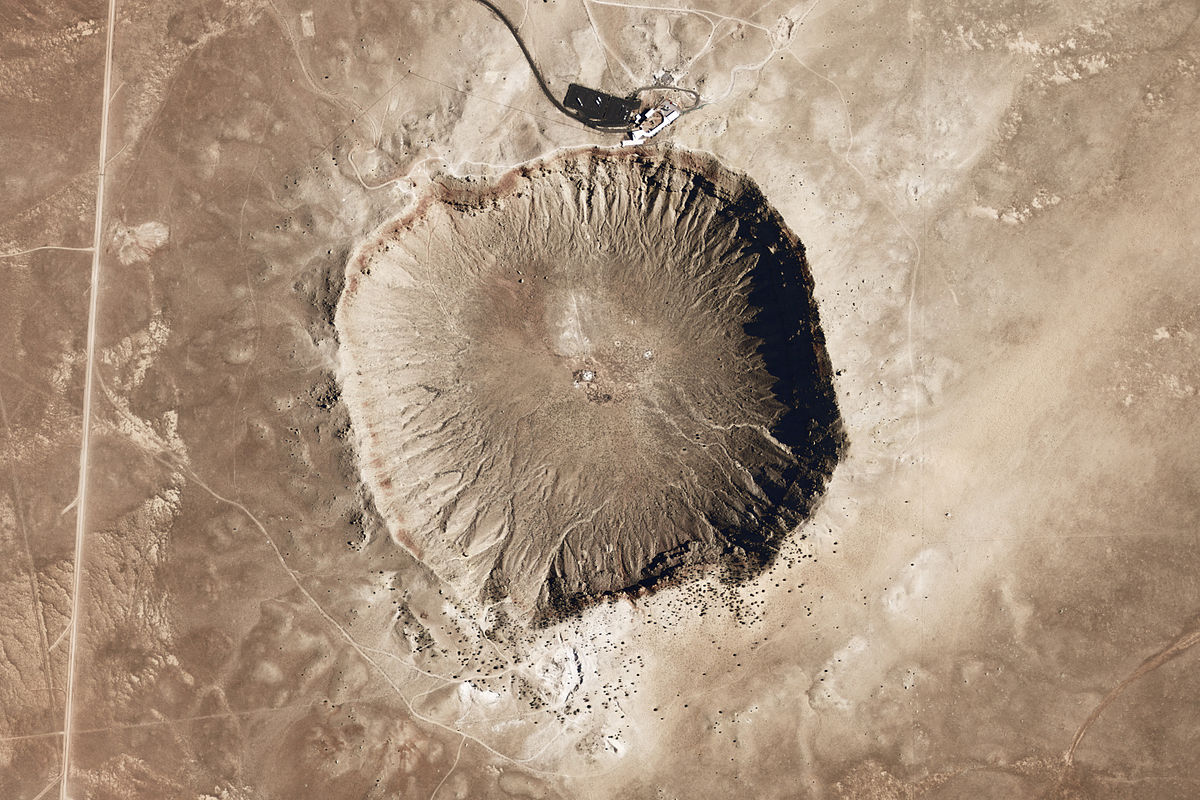
When it comes to exploring the vast wonders of the universe, few things capture our curiosity quite like craters. These captivating celestial features have amazed scientists and stargazers alike for centuries. From the moon’s pockmarked surface to the stunning impact sites on planets like Mars, craters offer us a fascinating glimpse into the violent history of our solar system.
In this article, we will delve into the incredible world of craters and unearth 12 extraordinary facts that will leave you in awe of these cosmic phenomena. From their formation to their significance in understanding planetary geology, we will explore the most intriguing aspects of these celestial potholes. So fasten your seatbelts and prepare for an exhilarating journey through space and time as we uncover the mysteries behind these dramatic impact features.
Key Takeaways:
- Craters are like cosmic scars, revealing the history of celestial bodies and the dramatic events that shaped them, from asteroid impacts to the extinction of dinosaurs.
- They can hold secrets of ancient water and resources for future space missions, making them more than just geological features—they’re potential stepping stones for human exploration.
The Moon has one of the largest known craters in the solar system.
The Moon is home to the South Pole-Aitken Basin, which is approximately 2,500 kilometers in diameter. This gigantic impact crater is thought to have been formed around 4 billion years ago.
Craters can be formed by various celestial objects.
While the most common source of craters is asteroids, they can also be caused by comets, meteorites, and even space debris. These impacting objects collide with planetary surfaces, leaving behind circular depressions known as craters.
Meteor Crater in Arizona, USA, is an impressive example of an impact crater on Earth.
Located near Winslow, Arizona, Meteor Crater is approximately 1.2 kilometers in diameter and 170 meters deep. It was formed around 50,000 years ago when an iron-nickel meteorite collided with Earth’s surface.
Craters can reveal valuable information about the history of celestial bodies.
By studying the size, shape, and composition of craters, scientists can gain insights into the geological processes that have shaped planets, moons, and asteroids over billions of years.
Craters can have central peaks or uplifted rims.
During the impact event, the tremendous amount of energy released can cause the central portion of the crater to bounce back up, forming a central peak. In some cases, the rim of the crater can also get uplifted, creating fascinating geological features.
Craters can create secondary impacts.
When a celestial object strikes a planetary surface, the impact can eject debris into space. Some of these ejected fragments can crash onto neighboring celestial bodies, forming secondary impact craters.
The Barringer Crater in Arizona is commonly known as Meteor Crater.
Originally named after Daniel Barringer, who was the first to propose its origin from a meteorite impact, this crater is a popular tourist attraction and offers visitors a chance to learn more about impact events.
Craters can have different shapes depending on the angle of impact.
Oblique impacts, where the impacting object strikes at an angle, can result in elliptical or asymmetrical craters. The shape of a crater can provide clues about the angle and speed of the impacting object.
The Chicxulub crater is linked to the extinction of dinosaurs.
The Chicxulub crater, located in present-day Mexico, is believed to have been created by the asteroid impact that led to the mass extinction event 66 million years ago, wiping out the dinosaurs.
Craters can act as natural basins for retaining water on planetary surfaces.
Some craters on the Moon and Mars have been found to contain ice deposits, likely preserved from ancient water sources. These impact-created basins offer potential resources for future human missions to these celestial bodies.
Craters are named after influential scientists, astronauts, and landmarks.
In recognition of their contributions to science and exploration, craters on the Moon, Mars, and other celestial bodies are often named after pioneers in the field and notable landmarks on Earth.
Collisions in the early solar system led to the formation of numerous craters.
During the chaotic early days of the solar system, there was a high frequency of collisions between celestial objects. These impacts shaped the surfaces of planets, moons, and asteroids, leaving behind a legacy of craters.
Conclusion
In conclusion, craters are intriguing and extraordinary features that can be found on various celestial bodies in the universe. From the massive impact craters on the moon to the mysterious Martian craters, these geological formations provide crucial insights into the history and evolution of our solar system. The study of craters helps scientists understand the impact events that have shaped planets and moons, as well as the dynamics of celestial bodies in space. By examining the size, shape, and composition of craters, scientists can uncover valuable information about the processes that have shaped our universe. With ongoing advancements in technology and space exploration, the knowledge and understanding of craters continue to expand, unveiling more extraordinary facts and uncovering the secrets of our cosmic neighbors.
FAQs
1. How are craters formed?
Craters are formed by the impact of objects, such as meteoroids or asteroids, colliding with the surface of a celestial body. The energy released during the impact causes excavation and ejection of material, resulting in the formation of a crater.
2. What is the largest known impact crater?
The largest known impact crater is the Vredefort Crater in South Africa. It has a diameter of approximately 300 kilometers (186 miles) and is estimated to be about 2 billion years old.
3. Can craters be found on other planets and moons?
Yes, craters can be found on other planets and moons in our solar system. The moon, Mars, Mercury, and other celestial bodies have craters of varying sizes and ages.
4. What can we learn from studying craters?
Studying craters provides valuable information about the impact history of a celestial body, including the frequency and size of impact events. It also helps scientists understand the geological processes that shape planets and moons.
5. Are there any craters that are visible from Earth?
Yes, some craters, such as the Barringer Crater (also known as Meteor Crater) in Arizona, USA, are visible from Earth. These craters serve as reminders of past impact events and provide opportunities for scientific research and exploration.
Craters captivate imaginations, offering glimpses into cosmic collisions and Earth's geological wonders. Delving deeper, volcanic craters astound with their fiery origins and breathtaking landscapes. Crater Lake's pristine waters and stunning vistas beckon nature enthusiasts. Planetary impact craters, scattered across celestial bodies, hold secrets of the solar system's turbulent past. Unravel more crater mysteries by exploring these enticing topics, each promising a unique journey of discovery. From volcanic marvels to serene lakes and cosmic scars, craters continue to captivate and inspire curiosity about our world and beyond.
Was this page helpful?
Our commitment to delivering trustworthy and engaging content is at the heart of what we do. Each fact on our site is contributed by real users like you, bringing a wealth of diverse insights and information. To ensure the highest standards of accuracy and reliability, our dedicated editors meticulously review each submission. This process guarantees that the facts we share are not only fascinating but also credible. Trust in our commitment to quality and authenticity as you explore and learn with us.


